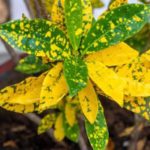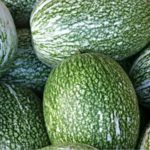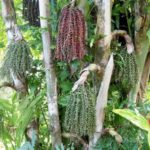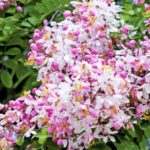If you’re a fan of the brightly-colored, eye-catching Chinese trumpet creeper and are curious about its cultivation, you’ve come to the right place. Below, you’ll find information on everything from its origins and characteristics to its cultivation and care.
1 Origin and Characteristics of the Chinese Trumpet Creeper
Origin of the Chinese Trumpet Creeper
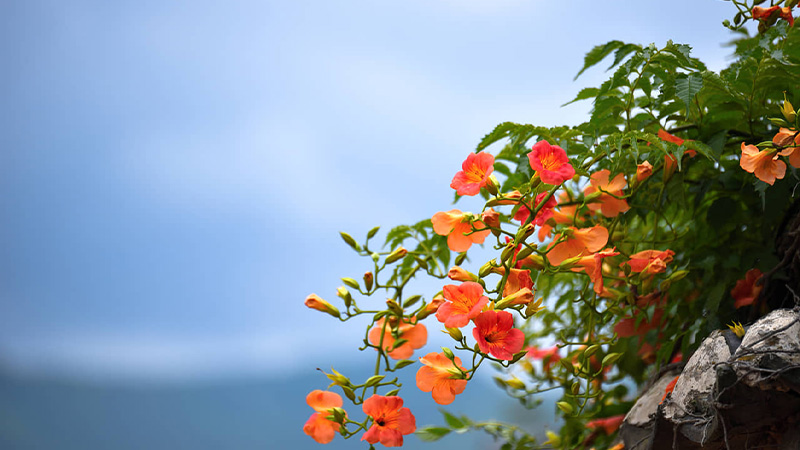 Origin of the Chinese Trumpet Creeper
Origin of the Chinese Trumpet Creeper
The Chinese trumpet creeper, known scientifically as Campsis Radicans, belongs to the Catalpa family (Bignoniaceae) and is native to North America. It goes by various names, including ling tiao, nu wei, jia tian xing, Mei Guo zi wei, and yao ling tiao.
Characteristics of the Chinese Trumpet Creeper
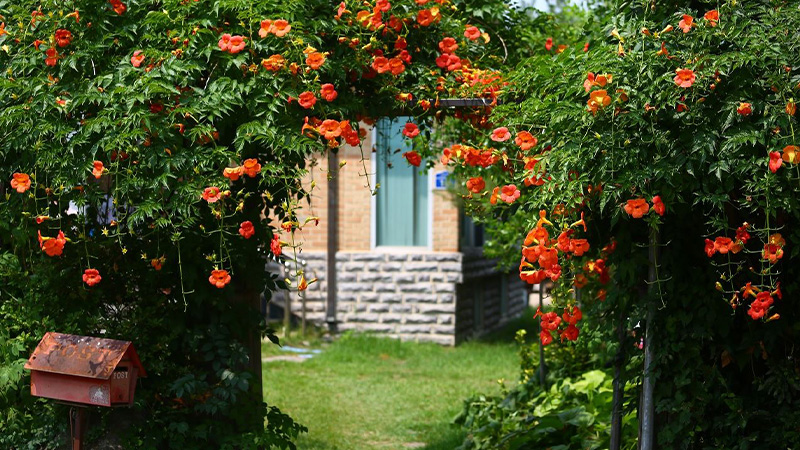 Characteristics of the Chinese Trumpet Creeper
Characteristics of the Chinese Trumpet Creeper
The Chinese trumpet creeper is a fast-growing vine with numerous branches that, over time, can turn into hardwood. Its light brown trunk is adorned with clusters of parasitic roots that aid in climbing and firmly attaching to surfaces, enabling it to climb to heights of several meters.
Its leaves are oval-shaped, pointed at both ends, and serrated along the edges, with a dark green, glossy appearance. The leaves change with the seasons, turning yellow in late autumn before falling off in winter, only to sprout anew in spring.
The flowers of the Chinese trumpet creeper resemble little bells, with slender bodies and flared heads. The petals are thin and delicate, and the flowers display a vibrant range of colors from red to orange, with a darker hue towards the center, creating a captivating effect.
The Chinese trumpet creeper blooms in clusters of 5 to 8 flowers, typically from May to October annually. These clusters dangle gracefully, creating a romantic and eye-catching display. The blooms last for about 5 to 7 days before wilting. After the flowers fade, long, pointed pods form, containing winged seeds.
2 Significance of the Chinese Trumpet Creeper
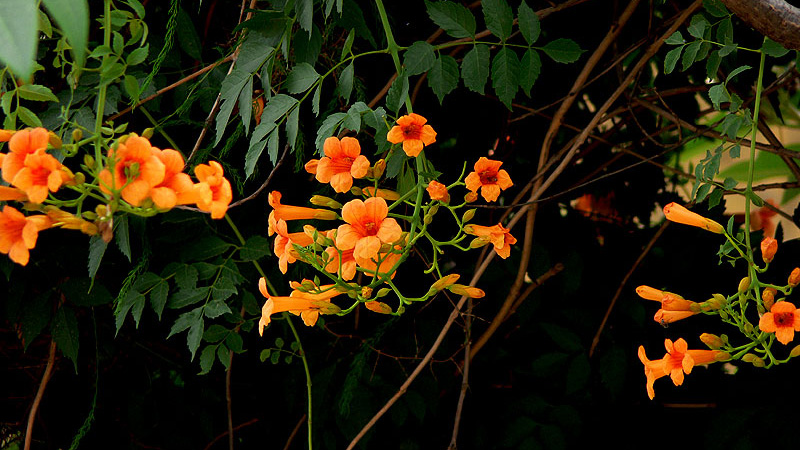 Significance of the Chinese Trumpet Creeper
Significance of the Chinese Trumpet Creeper
The delicate, wind-blown appearance of the Chinese trumpet creeper evokes a sense of femininity and grace. Thus, it is often associated with the delicate, soft, and graceful nature of women. As suggested by its name, the flower also evokes nostalgic memories of the past for homeowners.
The Chinese trumpet creeper is highly valued for its aesthetic appeal, with its vibrant red-orange hues and unique shape. When in bloom, it is sure to add a splash of color and attract attention to any garden or home.
Additionally, as the Chinese trumpet creeper is often used for fences, archways, and balconies, it is believed to ward off evil spirits and bring good fortune to the household.
3 Practical Uses of the Chinese Trumpet Creeper
Ornamental and Landscaping Purposes
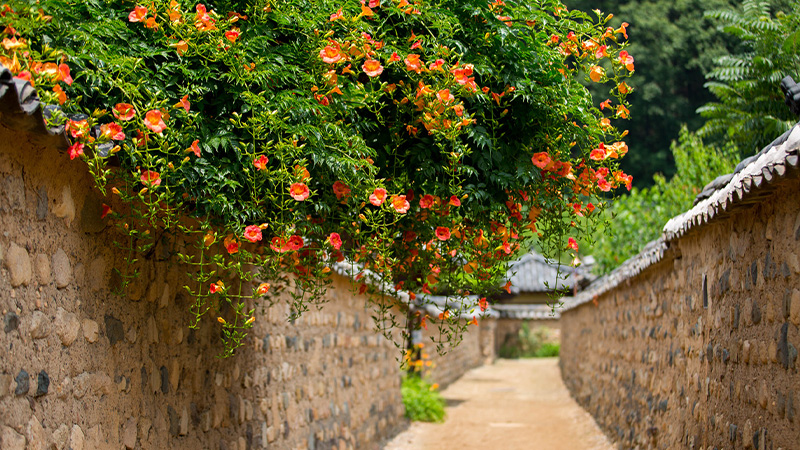 Ornamental and Landscaping Purposes
Ornamental and Landscaping Purposes
The Chinese trumpet creeper is a popular choice for landscaping due to its dense foliage and vibrant colors. Its thick canopy and bright red-orange flowers make it an ideal vine for creating a shaded arbor or trellis, providing both shade and a refreshing atmosphere during the hot summer months.
Medicinal Purposes in Traditional Chinese Medicine
 Medicinal Purposes in Traditional Chinese Medicine
Medicinal Purposes in Traditional Chinese Medicine
In Traditional Chinese Medicine, the flowers of the Chinese trumpet creeper are used, preferably when freshly bloomed and dried at 50°C to preserve their quality and color.
The flowers contain apigenin, which has a range of therapeutic properties, including dissolving blood stasis, regulating menstruation, dispelling wind, cooling the blood, treating amenorrhea, leukorrhea, menorrhagia, postpartum edema, acne, urticaria, and other skin conditions. It is also one of the 25 ingredients in a contraceptive formula.
Additionally, the vine is used to treat vaginal inflammation, bone fractures, burns, sprains, and hematochezia. The roots are effective in treating inflammation, blood stasis, swelling, rheumatism, enteritis, and gastric issues.
The recommended daily dosage is 5-10g, administered as a decoction, infusion, or powder.
4 Cultivation and Care of the Chinese Trumpet Creeper
Cultivation Methods
 Cultivation and Care of the Chinese Trumpet Creeper
Cultivation and Care of the Chinese Trumpet Creeper
The Chinese trumpet creeper thrives in sunny conditions, so it is essential to plant it in a location that receives ample sunlight for optimal growth and flowering. It grows best in tropical climates with high humidity, although it can be challenging to cultivate in colder regions with average humidity levels.
This versatile plant adapts to various soil types and environments, as long as the soil has good drainage. Regular watering is recommended during the plant’s growth phase, especially in the early morning or late afternoon, avoiding the intense midday sun.
Here are some common methods for propagating the Chinese trumpet creeper:
Cutting Method
 Cutting Method
Cutting Method
The best time to propagate the Chinese trumpet creeper by cutting is in early spring, when the temperature and humidity are ideal for successful propagation.
Note: For better results, perform the cutting in a shaded area, using well-aerated, loose soil or sandy soil with good drainage.
Select healthy, robust cuttings approximately 15-20cm in length, soak them in water for 30-40 minutes, then plant them at a slight angle in the soil.
The cuttings will take root within about 10 days, sprout within a year, and eventually bloom.
Seeding Method
 Seeding Method
Seeding Method
In addition to cuttings, the Chinese trumpet creeper can also be propagated by seed.
Sow the seeds in pots, cover them with a thin layer of soil, and maintain consistent moisture for 60 days to prevent the soil from drying out while avoiding waterlogging. Once the seeds germinate, the plant will grow rapidly, so be sure to provide a stake for it to climb.
Care Instructions
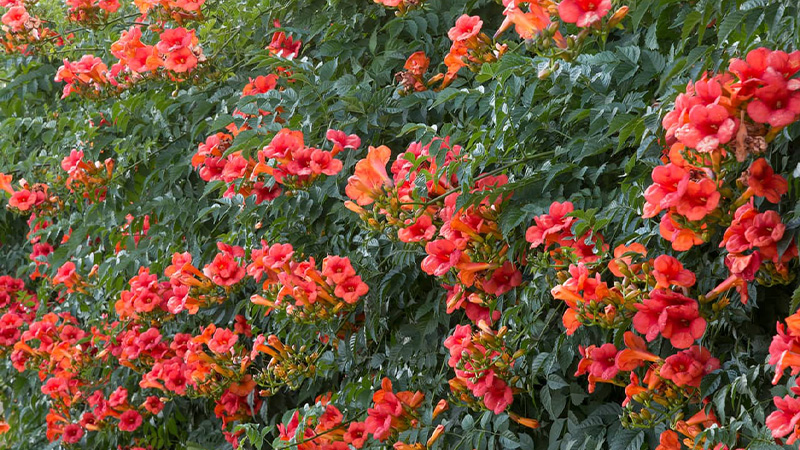 Care Instructions
Care Instructions
The Chinese trumpet creeper is a resilient plant that is easy to cultivate and maintain, as it is resistant to pests and diseases and can tolerate harsh conditions.
- Light: The Chinese trumpet creeper thrives in full sun, with more sunlight resulting in more abundant and vibrant blooms. Therefore, it is essential to plant it in a sunny, open area. If planted in a shaded or partially shaded location, the plant may produce more leaves and fewer flowers.
- Temperature: The optimal temperature range for the Chinese trumpet creeper is 15-40°C.
- Humidity: The plant prefers moderate humidity levels.
- Soil: The Chinese trumpet creeper is not particular about soil type, as long as it has good drainage.
- Watering: Regular watering is crucial during the plant’s growth phase. Water when the soil feels slightly dry, preferably in the morning, and water slowly to allow the soil to absorb the moisture gradually.
- Fertilization: Fertilize the plant monthly, providing a boost during the budding stage. Avoid using nitrogen fertilizer when the plant is in bloom to prevent inhibiting flowering.
Prune the plant during the rainy season to control its rapid growth. As the flowers appear at the tips of the branches and in the leaf axils, pruning will encourage more blooms. Remove any disorderly branches to allow the stronger ones to thrive, and pluck yellow or withered leaves to prevent bacterial and fungal infections while enhancing the beauty of the vine.
5 Where to Buy the Chinese Trumpet Creeper and Price Range
 Where to Buy and Price Range
Where to Buy and Price Range
The Chinese trumpet creeper is widely available and easy to cultivate, so finding seeds or seedlings is relatively straightforward. You can purchase them from nurseries, garden centers, or seed shops, or even online through e-commerce platforms. Be sure to choose a reputable source to ensure the quality of your seeds or seedlings.
The price of the Chinese trumpet creeper is quite affordable, ranging from 50,000 to 150,000 VND per plant, depending on the size and time of purchase.
We hope you found this information about the characteristics, significance, cultivation, and care of the Chinese trumpet creeper helpful! For those who admire this beautiful flower, these insights will surely come in handy.

